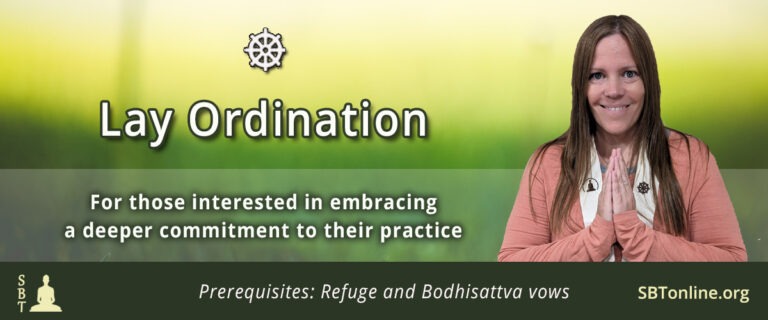Lay Ordination with SBT
In Buddhism, the practice of ordination dates back to the time of the Buddha himself, some two millennia ago. And since that time, it’s pertained primarily to monks and nuns who make up the Buddhist monastic order. However, in our modern age, the line between monastic and lay life (non-monastic) is often blurred, with many lay practitioners practicing like monastics, and many monastics draw to the advantages of the lay lifestyle. Historically, there has always been a strong distinction between the two groups, which helped to define and clarify both. But today, there’s a growing need for greater diversity in the choices of training within our paths.
The idea of ‘lay ordination’ in Buddhism, is a new one. The concept was first brought to me by sangha members who wanted a way to deepen their practice beyond their refuge and bodhisattva training but were not able, for whatever reason, to commit to the monastic lifestyle. Lay ordination in SBT offers lay practitioners an alternative for those wishing to deepen their training beyond traditional lay vows, offering a rigorous training program while still allowing them to remain engaged in lay life. To be clear, ordination, whether monastic or lay, is a serious commitment for serious practitioners. It requires great dedication, persistent effort, and a sincere desire for spiritual awakening.
SBT’s lay ordination vows are comprised of forty-six precepts of awakened behavior. Precepts meant to facilitate swift awakening by aiding us in recognizing and clarifying which aspects of ourselves and our lives are to be cultivated and which ones are to be abandoned.

